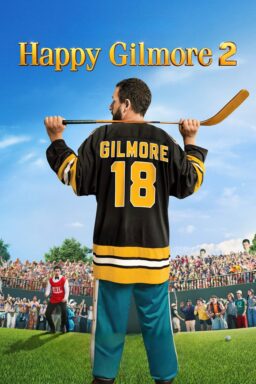Can you ever go home again? This query is tackled by the three films closing out our coverage of Sundance 2021’s NEXT section that all center on reunions, and the carnage they cause—emotional, psychological, or metaphysical.
With her feature directorial debut “Ma Belle, My Beauty,” New Orleans’ writer/helmer Marion Hill untangles the snarl of a polyamorous relationship undone. Amid a breathtaking backdrop of French vineyards and valleys is nestled the country home of newlyweds/bandmates Bertie (Idella Johnson) and Fred (Lucien Guignard). Theirs seems an enviable life of sunny days, wine-soaked nights, and making music together. But as a tour looms, Bertie has soured on singing, leaving Fred desperate for a quick fix. So, he calls in Lane (Hannah Pepper-Cunningham), who two years ago shared in their relationship as Bertie’s girlfriend. However, a lot has happened since then, including Fred and Bertie’s nuptials. So, Lane’s smooth stride back into Bertie’s life isn’t all that welcomed.
Hill’s film feels like a leisurely stroll on a hot summer day. There’s no rush to explain what exactly happened that broke up this tender trio. Instead, she allows us silent scenes where the two women take each other in, one with warmth, the other with anger. The chill melts as they tiptoe into casual conversation and a visit to the local market, where a montage of tasting and smelling is so enveloping you might feel the buttery melt of fresh cheese on your tongue. The past is not revealed in flashbacks but implied by the complicated emotions that swell over them in tugs of physical affection and stings of wounded reactions. Dinner parties and summer shindigs become emotionally fraught battlegrounds as Bertie pushes Lane away, yet cringes with jealousy when a sultry painter named Noa, (Sivan Noam Shimon) catches her eye.
The screenplay tenderly unfurls a sophisticated story of love, never letting the characters to be cheaply defined as right, wrong, or two-dimensional. Bertie’s initial coldness is given context as Lane learns of her day-to-day in France; Lane’s happy-go-lucky demeanor is complicated by reckless comments that cut deep. Meanwhile, Fred’s plotline revolves around balancing his professional obligations with her marriage’s wellbeing. Even Noa gets the opportunity to be more than a device for jealousy, revealing her emotional intelligence in a sparkling lakeside scene involving massage and passive-aggressiveness. The script and the pace give plenty of space for the characters to come to life, but Hill’s cast deserves praise for accomplishing this with such allure and verve.
Newcomer Pepper-Cunningham shares a chaotic chemistry with Johnson, so that every moment they draw close it’s hard to guess if they’ll kiss or quarrel. Her outward openness plays as the perfect foil to Johnson’s initial iciness. That façade crumbles in a fireside sing-along, where Bertie’s passion and pain take flight as a rib-rattling performance. In that magnificent moment, you might think nothing hotter could happen in this movie. You’d be wrong. The Neanderthals who fear the conversation around consent will kill excitement in both the bedroom and in love scenes will learn a spicy lesson from “Ma Belle, My Beauty.” Here, Sapphic sex involving unapologetic nudity and a strap-on is made all the hotter by whispered requests for consent. The sticky and sweet ecstasy hanging thick in the reply of “Yes” makes this movie the most titillating out of Sundance.
Simply put, Hill has made a real stunner with “Ma Belle, My Beauty.” This proudly queer romantic-drama delivers a poignant exploration of polyamory, giving empathy and insight into all of its lovers. Its cast dazzles, delivering lines like, “Drag me. I f**king want you too,” with vulnerability so naked it feels illicit to see it. All the while, Hill creates an atmosphere of swoon, which invites us into the highs and lows, the hot days and hotter nights. All told, it’s an absolutely enchanting pleasure that pulls us whole-bodied into its sway.

Taking a tale of reunion to a more cerebral space is “Son of Monarchs.” Written and directed by Alexis Gambis, this drama follows Mendel (Tenoch Huerta), a Mexican biologist who studies how to change the spots on monarch butterflies. Though he’s established a pleasure-filled present in New York City, where he has a job he loves, smart friends, and an exciting girlfriend, Mendel is haunted by his past. When his grandmother’s funeral draws him back to the battered mining town where he grew up, Mendel comes face to face with the life that might have been his, but instead is the burden of his brother (Noé Hernández).
Sibling rivalry bleeds into seething resentment as the two regard each other over their grandmother’s casket. Over the coming months, Mendel will fly back and forth between his hometown and his chosen home, all the while haunted by memories and strange visions. He reflects on the day his parents died, the grim games his grandmother and brother taught him, and the nightmares involving water and butterflies. His scientific odyssey becomes a strident metaphor for his own wish to change his spots and thereby erase his past.
Gambis invites audiences into Mendel’s state of mind through a slippery structure. The plotline leaps in time with flashbacks that blindside and jolting jumps that cut out plot points. These omissions are minor beats, like getting the first session of a big tattoo done or calling his girlfriend to join him in Mexico. Yet such leaps push us into an eerie unease that reflects his psychological trauma. Thankfully, this gives a thrilling edge to an otherwise stagnant drama.
Though intellectually stimulating, “Son of Monarchs” is emotionally anemic, grounding its pathos in two stoic brothers. We are welcomed into Mendel’s head, but not his heart. Alone, he broods, staring into the mid-distance. In the company of others, he pivots away from talking about his problems. Through flashbacks, we are only allowed into his fears, not his desires. So a climactic confrontation lacks a satisfying catharsis. Watching it, I wondered if I’d missed something, some crucial piece that would make this moment click. It’s as if Gambis trimmed too much of Mendel’s experience in sacrifice to capturing his threatening madness. Thus, the final act, which revisits rituals and settings to reclaim them, works only in theory, and not in feel. I was left nodding, not knocked out.

Forget dabbling in dreams, “The Blazing World” is here to chuck you into the deep-end with a spooky spin on “Alice in Wonderland.” Rather than a rabbit hole with a fluffy white bunny, this style-stuffed horror-thriller offers Udo Kier and a wormhole to another dimension. Harried heroine, Margaret Winter first spotted this peculiar portal on the day her twin sister drowned in the family pool. All these years since, she has been haunted by visions of this smirking man and the precious girl in a bubblegum pink dress. Could it be that her beloved sister is not dead, but trapped in another dimension? In hopes of rescuing her, Margaret returns to a home that quickly becomes a hellscape of demons, puzzles, and pain.
Actress Carlson Young not only fronts the film, but also makes her directorial debut with a script that she co-wrote with Pierce Brown. Together, they craft a psychedelic journey through grief and forgiveness. Color is thoughtfully employed to build a stark contrast between the pale present, where the Winters linger in agony, and the funhouse mirror version of their home, where colors are violently vibrant, like poison dart frogs warning of danger. Each leg of Margaret’s journey brings her into a curiouser and curiouser realm. Cotton candy skies stretch over a merciless desert. Inky shadows and blood-red accents drape over a dark den. Scorching green hallways with lurching doorframes lead to a candle-bedecked dining hall reminiscent of the underground lairs of “Pan's Labyrinth.” Then, within them lurk monsters distinctly disturbing.
Based on these visuals alone, I’d line up to see whatever Young dreams up next. Yet within all this style throbs a ferocious spirit. Young leads her cast by example, painting the real world with performances that are subtle, trauma trembling behind a fragile wall of polite smiles. The nightmare world is where her mother (Vinessa Shaw) and father (Dermot Mulroney) become twisted versions of themselves, hissing and weeping as Margaret bellows and battles. Then, there is Udo Kier, an icon who makes a meal of lines like, “The shadows keep what the shadows take.” With a crooked grin and a growling voice, he is the ambassador of metaphysical mayhem, gleefully ushering Margaret into savagery and potential salvation.
“The Blazing World” is bursting at the seams with color, oddness, and attitude, a bold proclamation that Young has arrived as a filmmaker to watch. Yet the most moving moment of the movie is one centered simply on a hand softly held. Amid much mind-bending grandeur, she presents a beat so gentle yet so hard-hitting that my jaw literally dropped. A lot of filmmakers can show off with spectacle. Far less can balance that effectively with an ardent humanity. To awe with outrageousness is impressive, to also get us to empathize is cinema divine.












